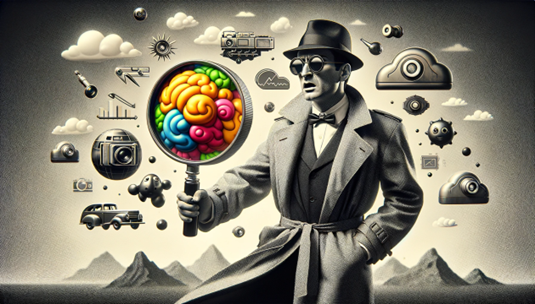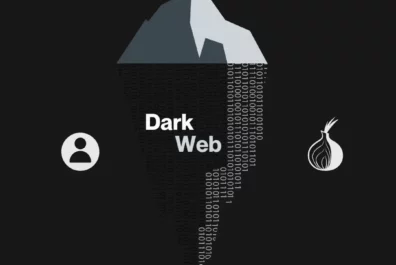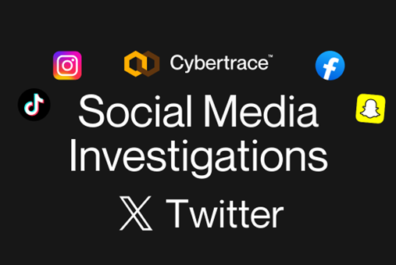Exposing the Deceptive World of AI-Generated Image Spam
In the world of social media, Facebook stands tall as the ultimate hub, its newsfeeds resembling vibrant town squares bustling with billions of daily visitors. Yet, amid this digital hustle and bustle, a troubling trend emerges: the relentless rise of AI-generated imagery, casting a shadow over what some ominously termed the “dead internet” theory. Once mere curiosities, these computer-crafted visuals now flood screens, reshaping the very essence of online conversation. This isn’t just a passing craze; it signifies a seismic shift that threatens to strip away the vitality and authenticity from our digital interactions.
As we grapple with this brave new reality, we’re compelled to confront the stark truths of our digital landscape, lest we surrender the soul of online experiences to the realm of artificial intelligence.
You might have seen them – pictures of kids dressed as cabbages or Jesus made from prawns. At first glance, they seem harmless, even amusing. But there’s more to these images than meets the eye.

Behind the scenes, researchers at Stanford Internet Observatory have uncovered a concerning truth – these images aren’t the work of human hands but computer algorithms. It’s all part of a sneaky strategy to rake in clicks and shares, often leading unsuspecting users to dodgy websites or revealing personal info.
What’s even trickier is how these images tug at our emotions, especially when they touch on sensitive topics like religion. With religious themes proving popular among AI spammers, it’s easy for users to get caught up in the illusion.

AI’s really stirring the pot, blurring reality in heaps of ways! You’ve got these deepfakes that can whip up videos that look authentic, and augmented reality is sneaking into our day-to-day, mixing the digital with the physical. It’s like living in a sci-fi flick! Plus, AI is now personalising everything, from the ads we view to the news we read, which can sometimes feel like we’re in our own little bubbles.
But it’s not just about tricking our peepers and ears. AI’s also making big calls behind the scenes, sometimes with biases we might not even discern. Have you engaged with a chatbot? It’s now becoming more challenging to discern whether or not you’re speaking with a real person. With all this happening, it’s making us rethink what’s real and what’s not, and how much we can trust the info we’re dished up. We’re definitely in for some interesting times ahead as we navigate this brave new world of AI.
Spotting AI-Made Creations: Tips to Recognise Them and Keep Your Feed Authentic
Despite efforts by platforms like Facebook to flag AI-generated content by applying ‘Imagined with AI’ labels to photorealistic images created using the Meta AI feature, telling real from fake is becoming increasingly tough. As AI gets smarter, the line between what’s genuine and what’s not keeps getting blurrier.

With AI now churning out visuals, it becomes a game figuring out whether a human or an algorithm crafted the picture. Just like with text, there are telltale signs:
- AI-generated images often lack the natural feel of movement or emotion, with textures appearing overly smooth and lighting seeming off.
- They might have proportion problems, especially with hands, and text in the image is frequently incorrect.
- Look for unusual artifacts or inconsistencies that could indicate manipulation or generation by algorithms
- AI-generated images may lack context or background information that typically accompanies real photographs.
- Keep an eye out for strange bits in the image that just don’t fit, like odd shapes or colors that don’t belong.
The bottom line? While AI can help create images, human oversight is crucial for ensuring they look right and convey the intended message.
How to Report Misleading AI-Generated Content on Facebook
For starters, we need to approach these images with a healthy dose of scepticism, by staying alert and reporting suspicious content. If you come across AI-generated content on Facebook that you believe is misleading or deceptive, you can report it to Facebook using the platform’s reporting tools. Here’s how you can do it:
- Flag the Content: First, locate the post or image that you want to report. You can usually find a small arrow or three-dot menu next to the content. Click on it to reveal a dropdown menu of options.
- Choose “Report”: In the dropdown menu, look for an option that says “Report” or something similar. Click on it to begin the reporting process.
- Select Reason: Facebook will ask you why you’re reporting the content. Look for an option that best describes why you believe the content is misleading. This could include categories like “It’s misleading” or “It’s false news.”
- Provide Details: Facebook may prompt you to provide additional details about why you believe the content is misleading. Be as specific as possible and include any relevant information that supports your report.
- Submit the Report: Once you’ve provided all the necessary information, submit your report to Facebook. The platform will review the content and take appropriate action if it violates their Community Standards
We can help keep our online spaces safer and more honest. After all, in a world where technology can easily trick us, it pays to improve one’s digital literacy skills.
In a recent YouTube video

Something Weird is Happening With A.I on Facebook, the role of AI in shaping the user experience on Facebook is brought to light. The YouTuber explores the relationship between the Facebook community and AI-generated content, revealing how easily users can be manipulated by AI algorithms. He also discusses a demographic divide, suggesting that younger users on platforms like Instagram are more resilient to AI influence compared to older users.
In conclusion, AI-generated images blur the line between what’s real and what’s not, revealing how AI subtly manipulates our emotions, especially on sensitive topics like religion. As AI expands its reach with tools like deepfakes and augmented reality, it’s crucial for us to tell the difference between genuine content and AI trickery. While platforms try to flag fake content, it’s up to us to stay sharp and digitally savvy to avoid being manipulated.
Recognising that different age groups may be more vulnerable to AI’s influence reminds us of the importance of spreading awareness. By staying informed and trusting our instincts, we can navigate this AI-driven world while keeping our online interactions genuine and authentic.


